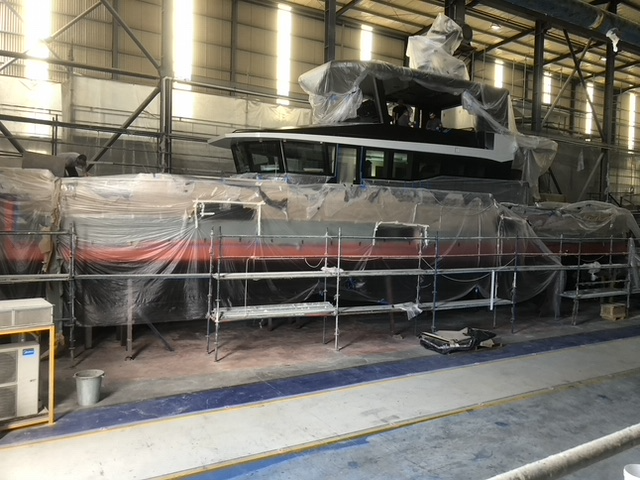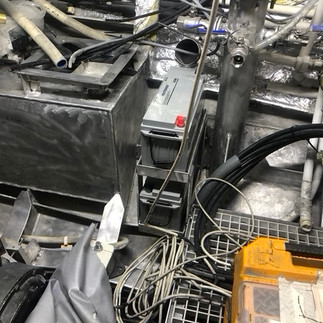Weekly Update - our Explorer Yacht Build
- Chris Leigh-Jones
- Sep 9, 2023
- 3 min read
And we have another weekly update on the progress of our Explorer Yacht, Vanguard. Between you and I, these are getting slightly tiresome to write as progress is slower than anticipated. Like all complicated projects, the end is never so clear-cut. When building custom homes in the USA, there was always a fractious period near the end; inspections, snagging lists, and delays all contributed towards a best-avoid atmosphere. After completing a successful project, hindsight was the salve to repair those relationships. This is about where we are now. It is a late but great project, down to the wire technically and probably financially, but it holds such future promise.
If you ever build a yacht, this will be you someday. Keep calm and soldier on, as one may say.
So what has happened recently?
The Hull
Antifouling is nearly completed; the final act is to move chocks from under the hull so that the Naval can apply antifouling to areas that could not be previously accessed.
Two 750mm Bruntons auto-props are now fitted, and the skegs have been profiled so prop blades can swing freely from Fwd/Reverse under load. Rope cutters and anodes have also been installed. They lifted the two large balanced rudders into place. The last act has been installing drain plugs in each rudder, which are hollow to minimize bearing loads.
We have also fitted to watertight access hatched to the aft swim platform. this space is difficult to access from the engine room and would be excellent for mooring ropes and deflated fenders, which are difficult to store elsewhere. Waste not want not! Lastly, the Tender cradle was fabricated and test fitted to the aft deck.
The Interior
The main helm station is being installed. Currently, the electricians are tidying up the wiring. The helm station is hinged on the forward edge, providing good internal connections and wiring access. We will also install ventilation under this console and a small self-releasing fire extinguisher due to the sheer density of electrical and electronic components in this location. Better safe than sorry.
We have installed a dedicated portable VHF storage and charging station adjacent to the rear deck access door. We picked this location as it was both secure and very convenient. The more difficult it is to grab equipment quickly, the less likely it is to be used!. A Flybridge helm is also being installed. Cabins are mostly completed; the trades are installing the final ceramic finishes.
The railing has been installed on the cabin sides; they are sufficiently robust to support jackstays and provide an inboard grab rail in bad weather. Outboard Dyneema railings are fine but give no leverage to keep a body on board if she rolls.
All glass is now installed, and windows have 3M low UV transmissivity film except the forward 5 at the helm station. These remain clear. Three 8mm layers of toughened glass with 1mm polymer laminations in between. 26mm overall, providing 150% of the strength for the equivalent aluminum side plating. A car windscreen but with two laminations and 26mm thick!
The Engine Room
Shaft lines are now installed, allowing the engines and hybrid drives to be bolted down. Rudder posts are in place, and the steering rams can finally be located. Naval also temporarily fitted the rudder bearing sealing socks to prevent seawater from entering the engine room via the rudder posts in heavy weather or following seas. Some work must still be done to avoid fretting against stringers and double-strapping the connections. However, we now know the system will work.
We found a convenient and accessible place for both house and starter batteries, importantly, also out of the bilge space. Engine exhausts will be installed this weekend. After that, the electricians can regain access to complete their own tasks.
Chris Leigh-Jones




























































As tiresome as the updates are for you to write, they are greatly appreciated and valuable to us. Thank-you and fair seas.
Looking more fabulous by the week!!
Left you a voicemail and text some time ago as well Hope launch is soon, give our love and regards to Sebs and Rhys !!
Send you Two messages, noticed they didn’t state sender. It was me Peter Pilon yr favorite hardheaded Dutch redneck
Have been following your updates and must admit that at this point my tolerance and patience would be close to exhaustion. Understand the need for keeping good relationships but after hand over of keys I would say applying penalties in the contract to the max extent is warranted.